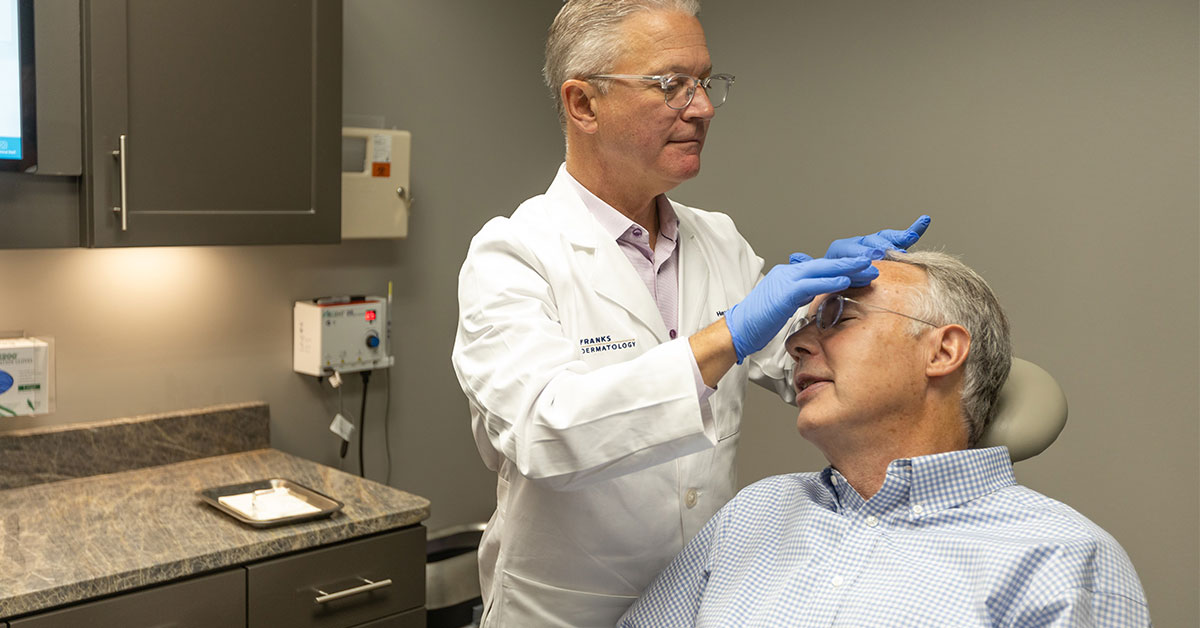Signs of Skin Cancer: Squamous Cell Carcinoma

Squamous Cell Carcinoma
Squamous cell carcinoma skin cancer can be mistaken for other common skin conditions.
Understanding Squamous Cell Carcinoma
Squamous cell carcinoma (SCC) forms a malignant tumor arising from epidermal keratinocytes. Most of the time, SCC comes from sun damage. SCC is more aggressive than basal cell carcinoma and has a higher potential to spread to other parts of the body if left untreated.
Risk Factors for Squamous Cell Carcinoma
The main risk factor for SCC includes sun exposure, especially sunburns in childhood or adolescence. Another risk factor includes exposure to certain chemicals and substances, such as tobacco smoke or arsenic. Having fair skin, a family history of skin cancer, or a weak immune system can also contribute to your overall risk of getting SCC.
By knowing the risk factors for SCC, you can take the steps needed to protect yourself. It’s vital to protect the skin from the sun by wearing protective clothing and using sunscreens. Additionally, keep in mind using tanning beds, smoking, or proximity to toxic chemicals for long periods of time can lead to a higher risk for SCC.
Signs & Symptoms of Squamous Cell Carcinoma
There are a wide range of SCC symptoms. You can read the most common symptoms to keep an eye out for here.
Rough, Scaly Red Patch
A persistent rough, scaly red patch is the most common sign of SCC. It may be mistaken for a non-cancerous skin condition such as eczema or psoriasis. The patch may bleed easily and not heal.
Raised, Firm Red Bump
SCC can also appear as a raised, firm red bump that may be mistaken for a pimple or insect bite. The bump may be tender to the touch and may be larger than a pencil eraser.
Warty Lesion
SCC may present as a rough spot that looks like a wart or callus. The lesion may be rough and raised and have a scaly, crusted surface.
Open Sore That Doesn’t Heal
Keep an eye out for something that looks like an open sore that doesn’t heal and may bleed or ooze. The sore may be crusted or scaly and may be accompanied by itching or pain.
Flat, Scaly Brown Patch
SCC can appear as a flat, scaly, brown or flesh-colored patch that may be mistaken for age spots or freckles. The patch may be asymmetrical and have irregular borders.
It’s important to note that SCC can appear in different forms and may not always have the same symptoms, so it’s a good idea to consult a dermatologist for a proper diagnosis and the appropriate treatment.
Treating Squamous Cell Carcinoma
Because of improvements in medicine and technology, there are now a number of ways to treat SCC. Some of these include:
- Surgery, which is the most common treatment for SCC, involves removing the cancerous tissue. Depending on the size and location of the tumor, the surgery can be done with either local or general anesthesia.
- Radiation therapy uses high-energy rays to kill cancer cells and shrink tumors. It is usually used when the tumor is too large or too difficult to reach for surgery.
- Topical medications such as 5-fluorouracil are used to slow the growth of cancer cells and reduce the size of the tumor. They can be put on the tumor directly, or they can be used along with surgery or radiation therapy.
Contact Franks Dermatology About Squamous Cell Carcinoma
At Franks Dermatology, our team of specialists is committed to providing client-centered care. We know the importance of early detection and treatment of SCC, and our team will work with you every step of the way to ensure that you receive the best care possible.
When facing SCC, early detection and treatments leads to the most positive outcomes. Therefore, we encourage you to pay attention to the signs of SCC and schedule an appointment with us by calling (501) 246-1042 if you notice any suspicious changes on your skin.
